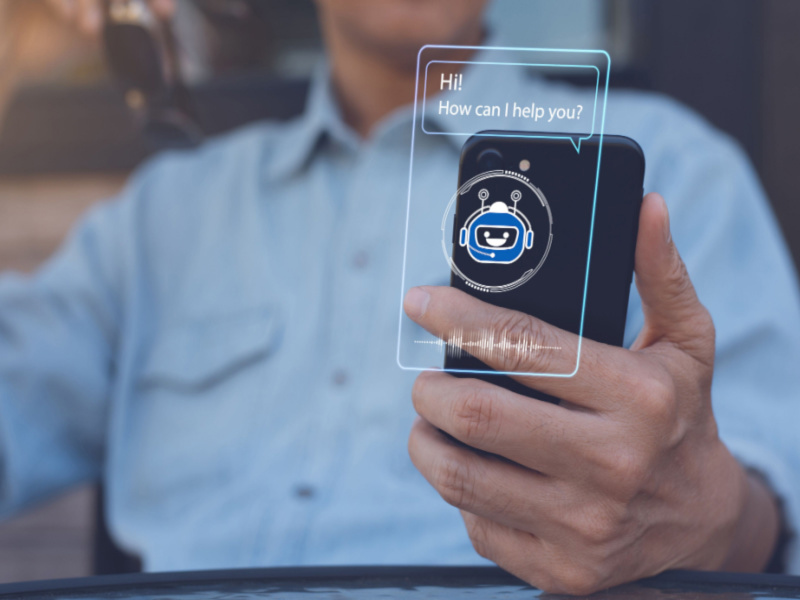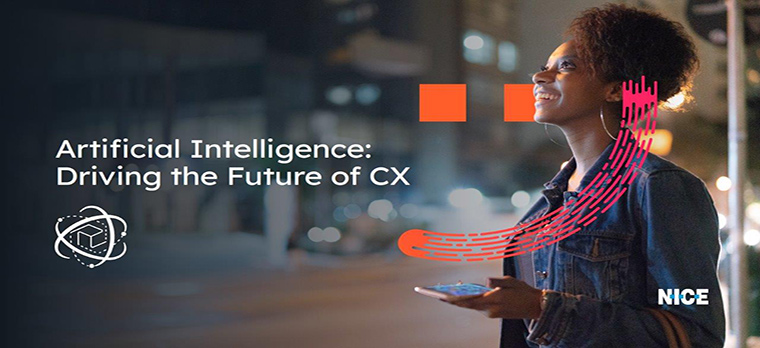For those of us who are old enough, we remember watching sci-fi movies and predicting what the future would look like. Don’t you remember watching Back to the Future and guessing which aspects would come to fruition? Some of our predictions were accurate and some of them were very miscalculated—like the hoverboard! But I certainly couldn’t have predicted that mobile phones would become supercomputers capable of nearly any task a person could fathom from instant language translation, inch-perfect GPS to real-time video chat with anybody in any part of the world.
And even though flying cars haven’t had their time to shine just yet, we’re living that future of the sci-fi movie. We have Artificial Intelligence (AI) to thank, and it truly has made life easier. AI powers your Google Assistant and automates simple, everyday tasks. In some cases, it’s even replacing humans entirely.
Take grocery stores, for example. They have evolved from the traditional checkout lines with human cashiers to an experience where you shop, put items in your cart, and then just walk out the door. Your account is charged automatically for the items you take. That’s AI making life easier and improving the customer experience.
Your contact center solution is part of this revolution too. The challenge has always been to quickly answer questions, resolve issues, limit the number of transfers and the need for identity verification. Interactive Voice Response (IVR) was designed to solve these challenges, allowing customers to navigate the routing process by saying a word or short phrase like “Take me to my account”. Standard IVR helped in some instances, but AI and Machine Learning (ML) have changed the game, taking us into the robot-influenced world that was once the basis for the sci-fi movies we watched in our youth.
Conversational AI: have a chat!
“I’m sorry, I didn’t get that” used to be a chatbot’s favorite phrase. Not anymore. Now conversational AI lets customers have real back-and-forth discussions with virtual agents. With NICE CXone Virtual Agent Hub and Google Cloud Dialogflow, companies can design and easily deploy virtual agents with natural language understanding to interact with customers and allow them to resolve their problems without the need for a live agent.
The approach is simple; if customers feel like they are talking with a computer, their responses will be limited to what they believe a computer will understand. If they feel like they are talking with “someone” more intelligent, they will speak more freely—conversationally—zeroing in on their specific needs quicker. It doesn’t eliminate the need for human agents entirely but, with the virtual agent handling the initial interaction and collecting information, the number of calls that require a live agent is reduced drastically.
Remember the scene in Back to the Future Part II when Marty McFly walks into Café 80’s staffed by talking computer screens and orders a Pepsi? It seems like we had our ideals of what convenience would look like in the future, and now we are living it!
Live agents plus AI = The Dream Team
In the contact center of the future, virtual agents will field a large volume of calls but when a customer does want a live agent, AI will make sure it’s a seamless connection.
A common touchpoint for clients, the contact center can make-or-break a business. A study by Forbes found that 67% of customers have become “serial switchers” who are willing to switch brands because of a poor customer experience.i With this kind of volatility, a state-of-the-art contact center experience is critical.
We may still think that speaking to a live agent is the gold standard, but, as it turns out, customers don’t always want to be connected to a human agent anymore. In fact, 99% of users in a recent IBM study reported an increase in customer satisfaction as a result of using virtual agents.ii With a demand that overwhelming, it’s essential to give customers what they want.

When routing calls, NICE CXone uses Predictive Behavior Analytics and sentiment analysis to decide which agent, virtual or human, is best matched with a caller. This strategic and intelligent matchmaking ensures that each customer interaction is more personalized and engaging. In fact, 58% of companies with top-performing contact centers have already adopted predictive analytics. So when a customer calls in, there’s a good chance that the virtual agent that answers already knows what they’re calling about. On the off chance that they don’t, the intelligence of the chatbot will know exactly what agent is best equipped to help them with their needs and they are routed there quickly.
AI is used throughout the call, adding value by providing agents with customer data and information in real-time. Then based on the natural language understanding and the caller history, it will suggest promising up-sell and cross-selling opportunities, again in real-time, making the contact center of the future not only efficient, but profitable.
Improving the agent experience
In the contact center of the future, agents are professionals working in tandem with the power of AI to deliver the best outcomes for customers. In fact, 86% of executives rank employee experience as the #1 factor in delivering consistent, positive CX.iii
A primary source of frustration for agents has always been fielding calls that are repetitive and mundane in nature. But with virtual agents doing the light lifting of answering simple requests that make up the majority of contact center calls, human agents can focus on more challenging calls that utilize their expertise and enable them to deliver a more personalized experience.
In the contact center of the future, it’s not only virtual agents that have improved. Live agents also benefit greatly from the influence of AI. Contact center agents have historically been miserable in their jobs and why wouldn’t they be? Spending hours on the phone with disgruntled callers annoyed by waiting on hold and getting rerouted several times doesn’t sound like a dream job for anyone. But with the added benefits of CXone Virtual Agent Hub and Google Cloud Dialogflow, live agents’ jobs have become more enjoyable on account of being able to assist customers with ease. Who doesn’t love making someone else happy?

AI even helps with employee training. With the data from predictive analytics and sentiment scoring, AI-enabled behavior data models can objectively score agent behaviors and inform supervisors on the coaching their agents need.
Historically, contact centers have had consistently high turnover rates, up to 40% even. Improving agent engagement and training can help lower this number, giving the HR team a meaningful break in hiring and onboarding. Happy agents are more effective agents, which is important for job satisfaction, retention, as well as the customer experience. This creates a lasting loyalty in customers who would much rather call a contact center with a happy agent than one who can’t wait for the end of their shift.
The future is here
While the kids who grew up learning from tablets and smartphones may not appreciate how far into the future we’ve moved, those of us who had to rewind our movies before returning them are happy that we’re not stuck with “I’m sorry, Dave. I’m afraid I can’t do that.”
With virtual agents, conversational AI, intelligent routing, and predictive analytics, NICE CXone and Google Cloud Dialogflow is improving the customer experience every day. Ready or not, the future is here today!
Get the eBook Artificial Intelligence: Driving the Future of CX – download here.
[i] Forbes.com: Businesses Lose $75 Billion Due To Poor Customer Service (2018)
[ii] IBM.com: The value of virtual agent technology (2021)
[iii] Gartner: Gartner Survey Finds Employee Engagement a Top Concern Affecting Customer Experience (2018)




